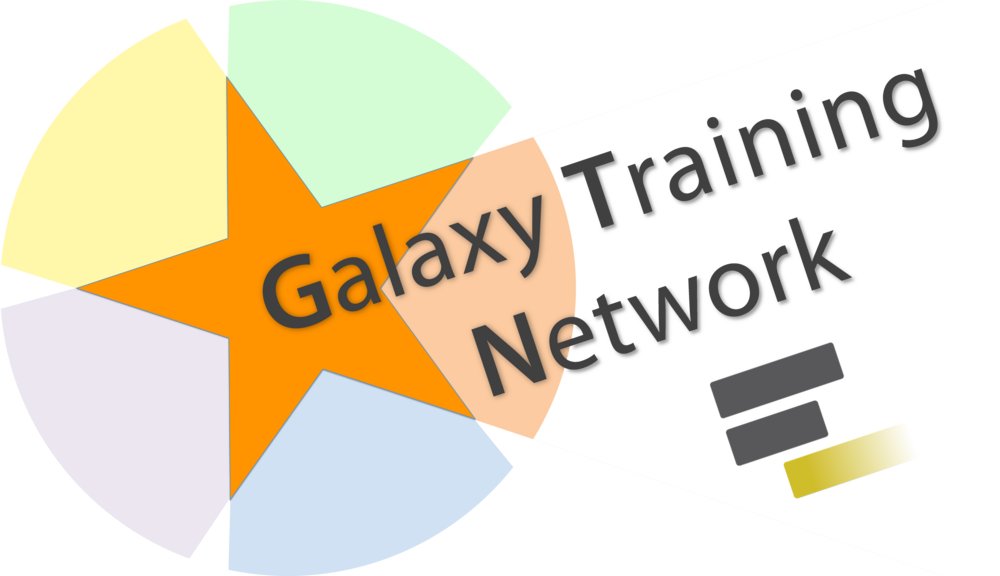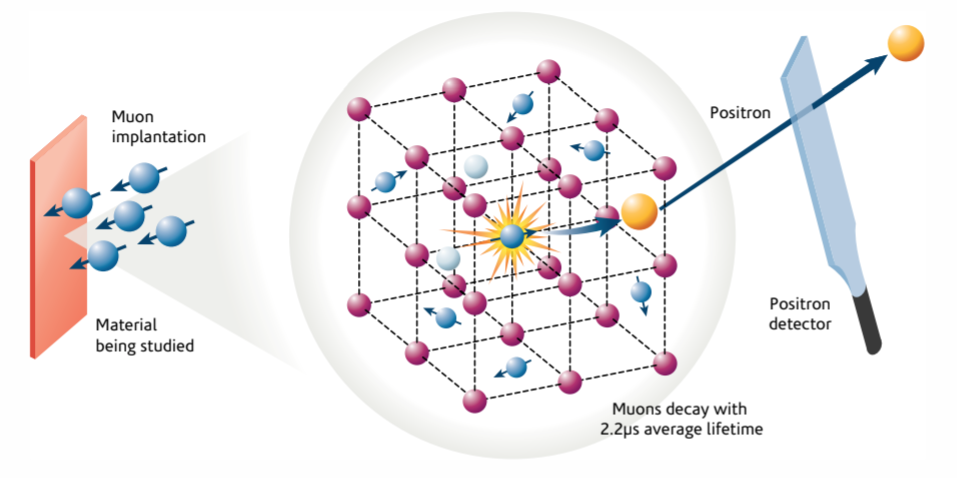Introduction to Muon Spectroscopy
Contributors
| Author(s) |
|
| Editor(s) |
|
What are “Muons”?
Muons are subatomic particles that have spin 1/2, carry one elementary electric charge, and have a mass about 207 times the rest mass of the electron or 1/9th of the rest mass of the proton.
Muons may be though of as “heavy electrons” or “light protons”, and they are generated via nuclear reactions currently at four muon sources around the world.
The ISIS Neutron and Muon Source, at the Rutherford Appleton Laboratory in the UK, is one of them.
What is Muon Spectroscopy?
In a muon experiment, the muons are channelled into beamlines and fired towards the samples that we want to study.
They are implanted into the sample and decay with an average lifetime of 2.2μs, releasing a positron in the direction of the spin of the muon at the time of decay.
The positrons leave the sample and are collected by a positron detector. These detections are used to infer the behaviour of the muons and, with that, study different properties of the sample.
Muon Simulations
One of the main problems in Muon Spectroscopy is knowing where the muon is implanted - where it stops - inside the sample.
The stopping site is influenced by many factors and knowing its location is very useful for the interpretation of muon experiments.
Computer simulations can help with estimating the muon stopping site.
Muon Galaxy tools
Muon Galaxy gives easy access to a set of software tools developed by the Muon Spectroscopy Computational Project (MSCP) for simulating muon science experiments including:
-
approximating the muon stopping site
-
simulating spin dynamics of muonated structures
Thank you!
This material is the result of a collaborative work. Thanks to the Galaxy Training Network and all the contributors! Tutorial Content is licensed under
Creative Commons Attribution 4.0 International License.
Tutorial Content is licensed under
Creative Commons Attribution 4.0 International License.
Funding
These individuals or organisations provided funding support for the development of this resource

